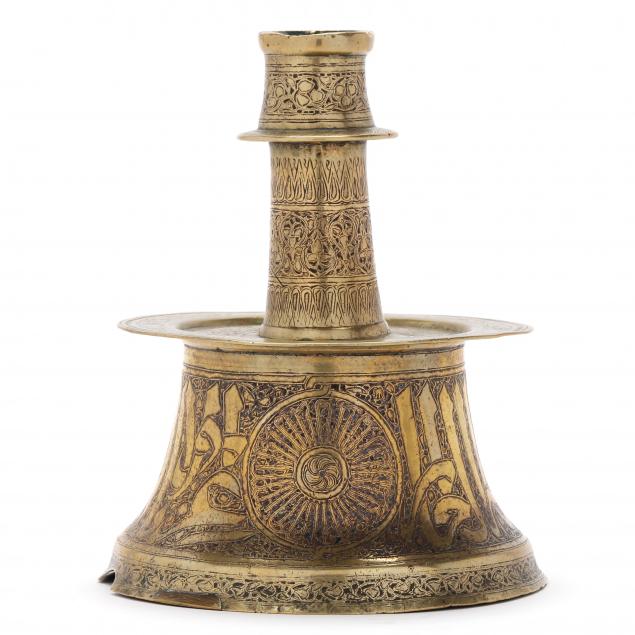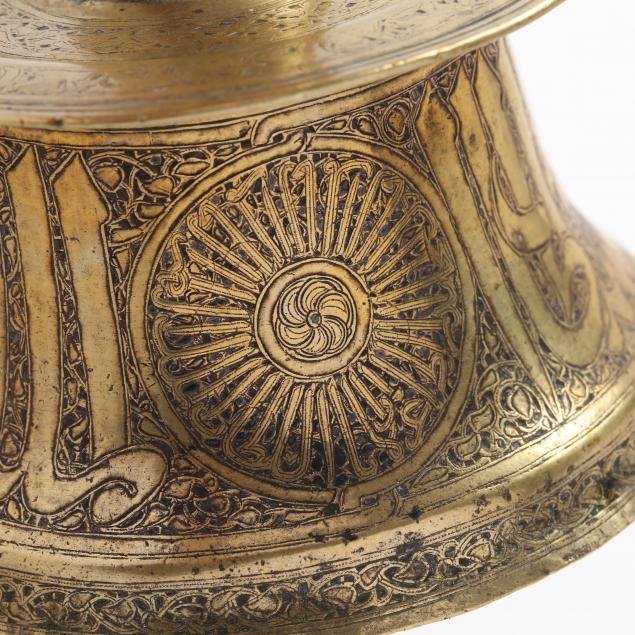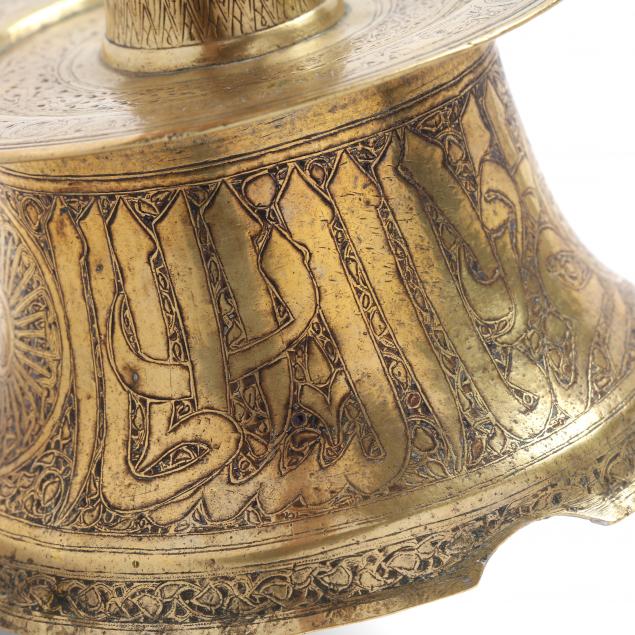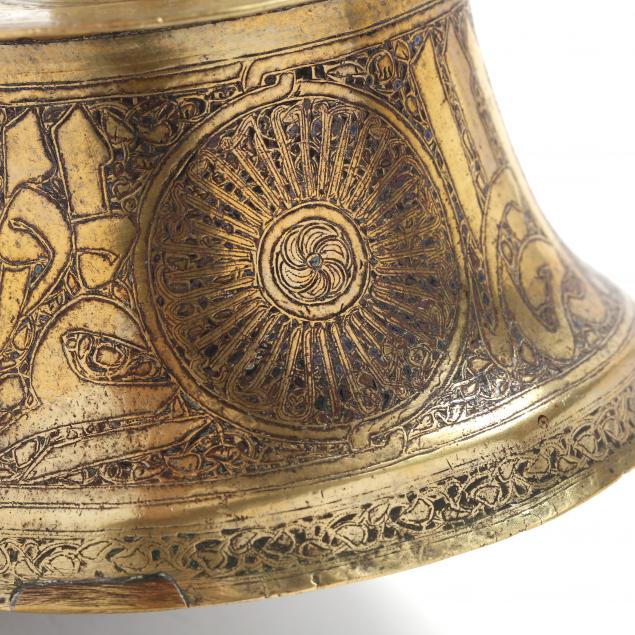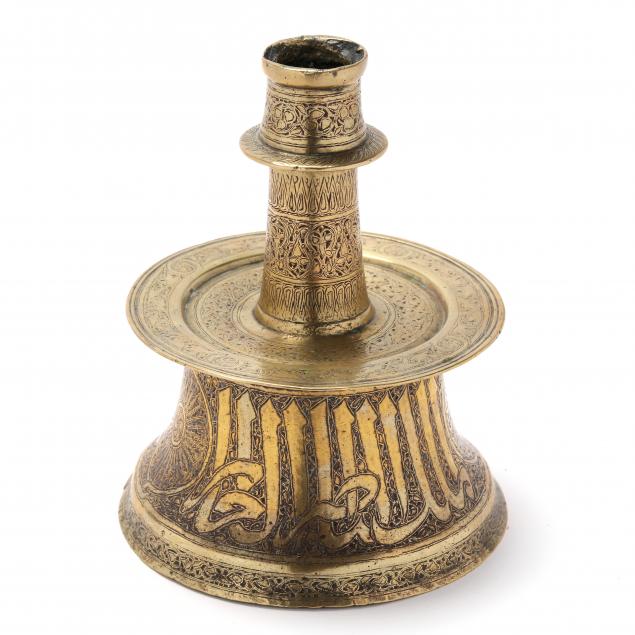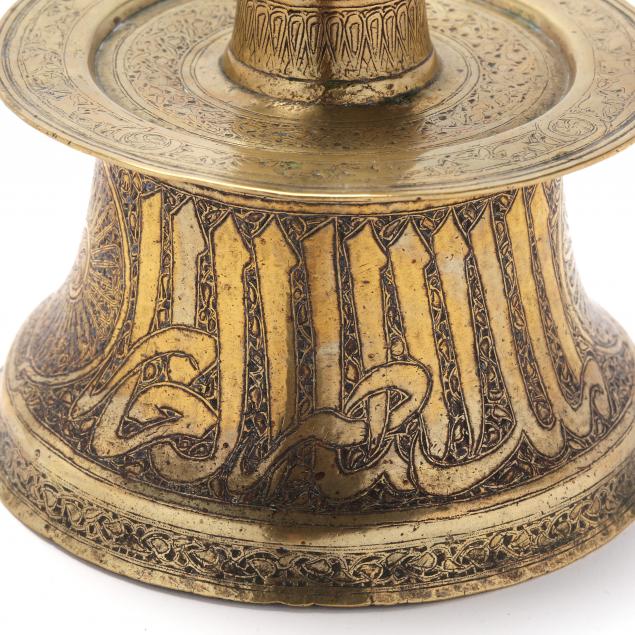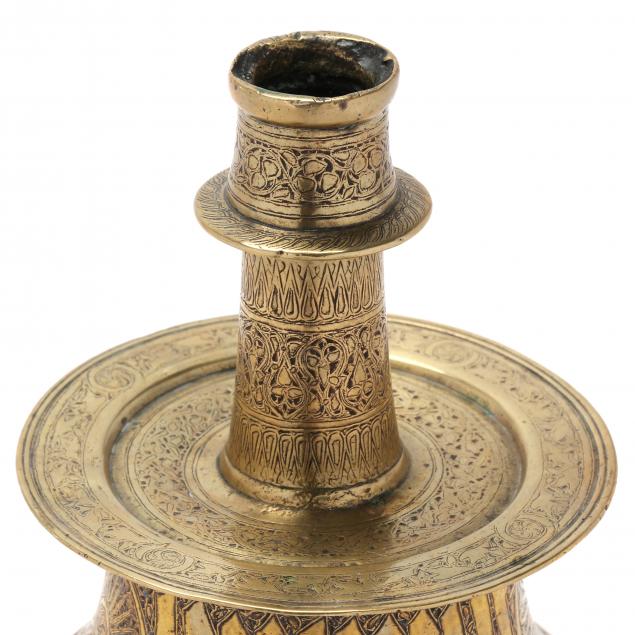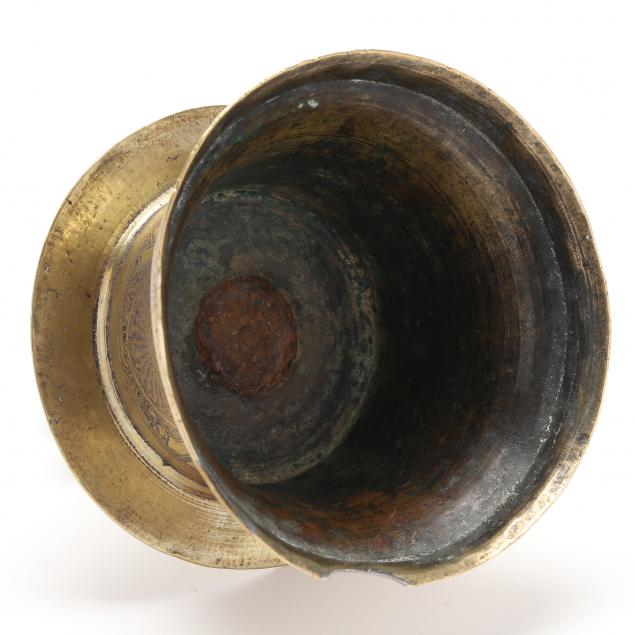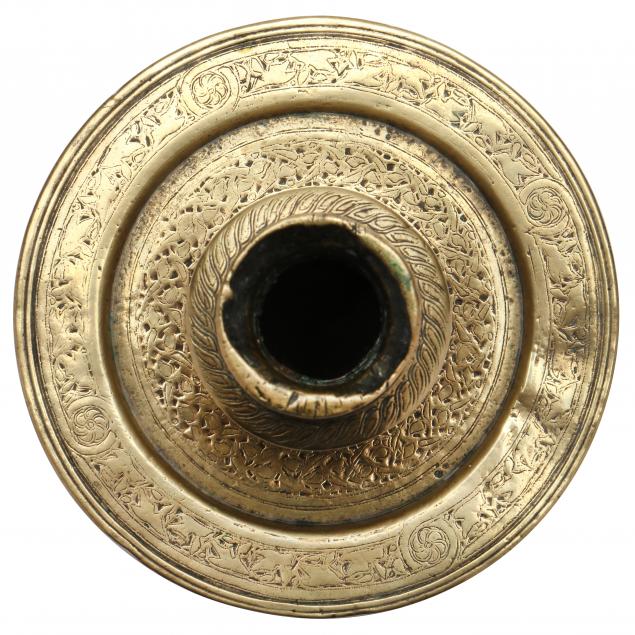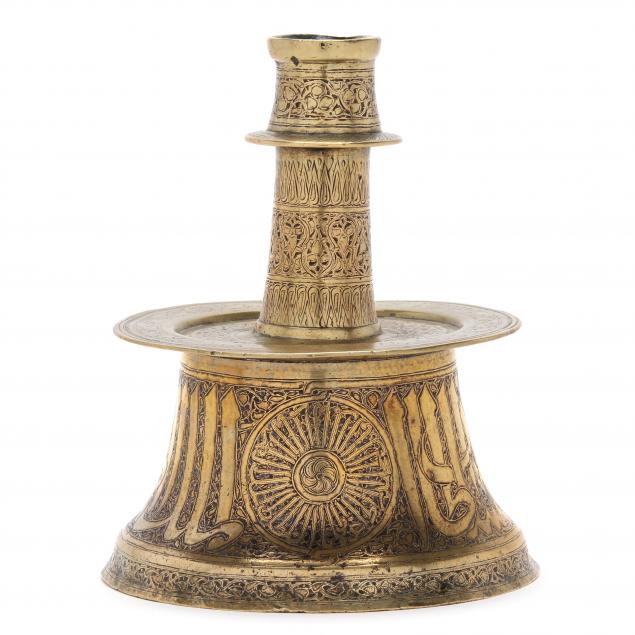
Lot 188
A Rare Mamluk Silver-Inlaid Brass Candlestick
Explore more items like this one.
Visit our Decorative Arts Department Decorative Arts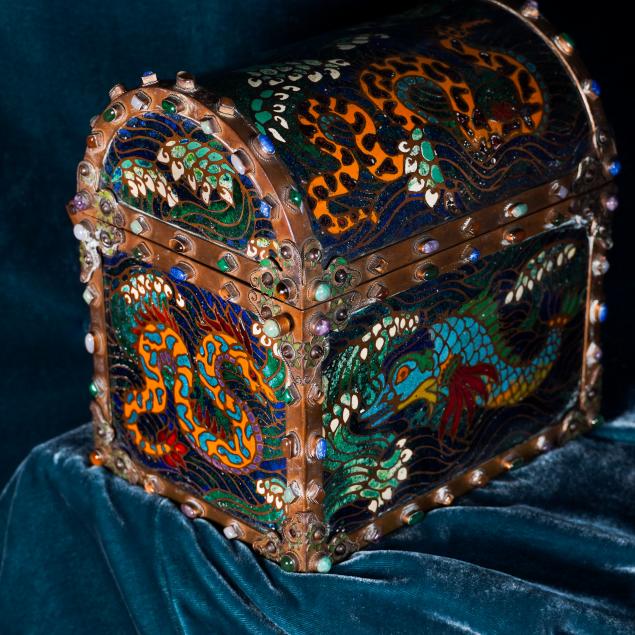
Lot Details & Additional Photographs
8 3/4 x 6 5/8 x 6 5/8 in.
The two large radial roundels on the base translate as Glory to our Master the Sultan, al-Malik al-Nasir, wise, diligent and just, who exerts himself [in time of war], who stands ready [to protect the realm],.... The intersecting bold calligraphy stretching the height of the base translates as Glory to our Master the Sultan, al-Malik al-Nasir, the Wise.... The inscriptions are an acclamation of the reigning Sultan's authority to rule, and as an instrument of light, they further expressed the connection between the Sultan and the sun.
Informed by metalworking traditions of 12th-century Iran and Iraq, the Sultan would commission the most accomplished metalworkers to produce high quality decorative objects including candlesticks, bowls, incense burners, dishes, armor, and other objects. Mamluk candlesticks were likely used in religious ceremonies, weddings and other celebrations, where it would have been widely seen by members of the court. These may have also been given as luxurious gifts to trusted military officials, and other members of the Sultan's complex court and social hierarchical system.
For similar examples, please see the MET Museum (acc.no.1971.40);
Lot 116 Sotheby's, London, 8 October 2008; Lot 110 Sotheby's, London, 25 October 2023.
Some rubbing and denting to surfaces (most notably at drip terrace; base rim with soldered repair, and crescent-shape area of loss; most silver decoration is missing, but XRF testing silver in minute amounts.
$5,000 - 10,000
